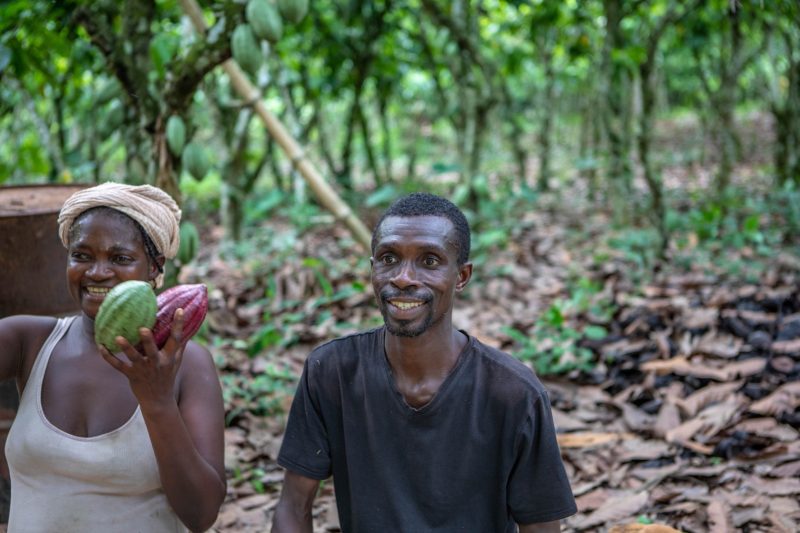ICCO warns of continued global market uncertainty impacting on international cocoa production

Cocoa farming in Ghana (pic Ben Rotthoff)
The latest figures from the International Cocoa Organisation (ICCO) have shown that from the 2021/22 season, demand for cocoa is anticipated to overtake supply – yet it warns wider global economic uncertainty continues to impact on the sector, writes Neill Barston.
As the Ivory Coast-based group noted, manufacturers have projected a strong growth in sales for the remainder of this year, which has been mirrored by an upturn in grindings in quarter two of 2022 in Europe and South East Asia. However, it noted there was an inverse situation in North America, which posed key challenges.
The ICCO noted that the upturn in processing activity ‘did not seem to be sufficient to counterbalance the effects of current microeconomic parameters,’ as it highlighted findings from the latest quarterly grindings of three trade associations namely the European Cocoa Association (ECA), the National Confectioners’ Association (NCA), and the Cocoa Association of Asia (CAA).
In the latest quarterly data, grindings increased in Europe by 2.03% year-on-year to reach 364,081 tonnes during Q2.2022, but according to the ICCO this may have been done in anticipation of fast-rising energy costs on the continent. Despite the encouraging upturn in processing, there was in fact an 11% year-on-year decrease in import of semi-finished products to the region, which was recorded at 68,805 tonnes at the end of the second quarter of this year.
Meanwhile, in South East Asia, the CAA’s data revealed that cocoa processing activities in the region increased by 3.64% to 228,895 tonnes in Q2.2022 compared with 220,865 tonnes in Q2.2021. Net exports of semi-finished products in bean equivalent in South-East Asia, shrank by 27% to 398,767 tonnes. According to the ICCO, around 63% of the net exports of cocoa solids from Indonesia, Malaysia and Singapore are shipped to regions different from East Asia, South Asia – excluding intra-trade – and South-East Asia where important rates of growth of the population
are recorded.
Inversely, the NCA reported a year-on-year quarterly decline of 6.29% in cocoa processing. This amounts to 115,899 tonnes against 123,680 tonnes recorded during the second quarter of 2021. As shown in Figure 3, in North America, net imports of semi-finished products in bean equivalent increased by 22% from 512,046 tonnes to 623,449 tonnes, indicating that a drop in grindings has been mitigated by import of cocoa processed outside of the region.
As the ICCO added, on a cumulative basis, the trend in grindings is positive for Europe and South-East Asia, but negative for North America. Indeed, since the start of the 2021/22 crop year, grindings increased year on year in both Europe and South-East Asia while in the United States processing activities plunged.
At the end of the third quarter of the 2021/22 season, processed cocoa amounted to 1.103 million tonnes, up by 4.21% compared to the level seen a year earlier. In SouthEast Asia, grindings increased by 3.26% year-on-year to reach 673,517 tonnes, while in North America a 3.47% tumble to 347,207 tonnes was recorded in grindings.



